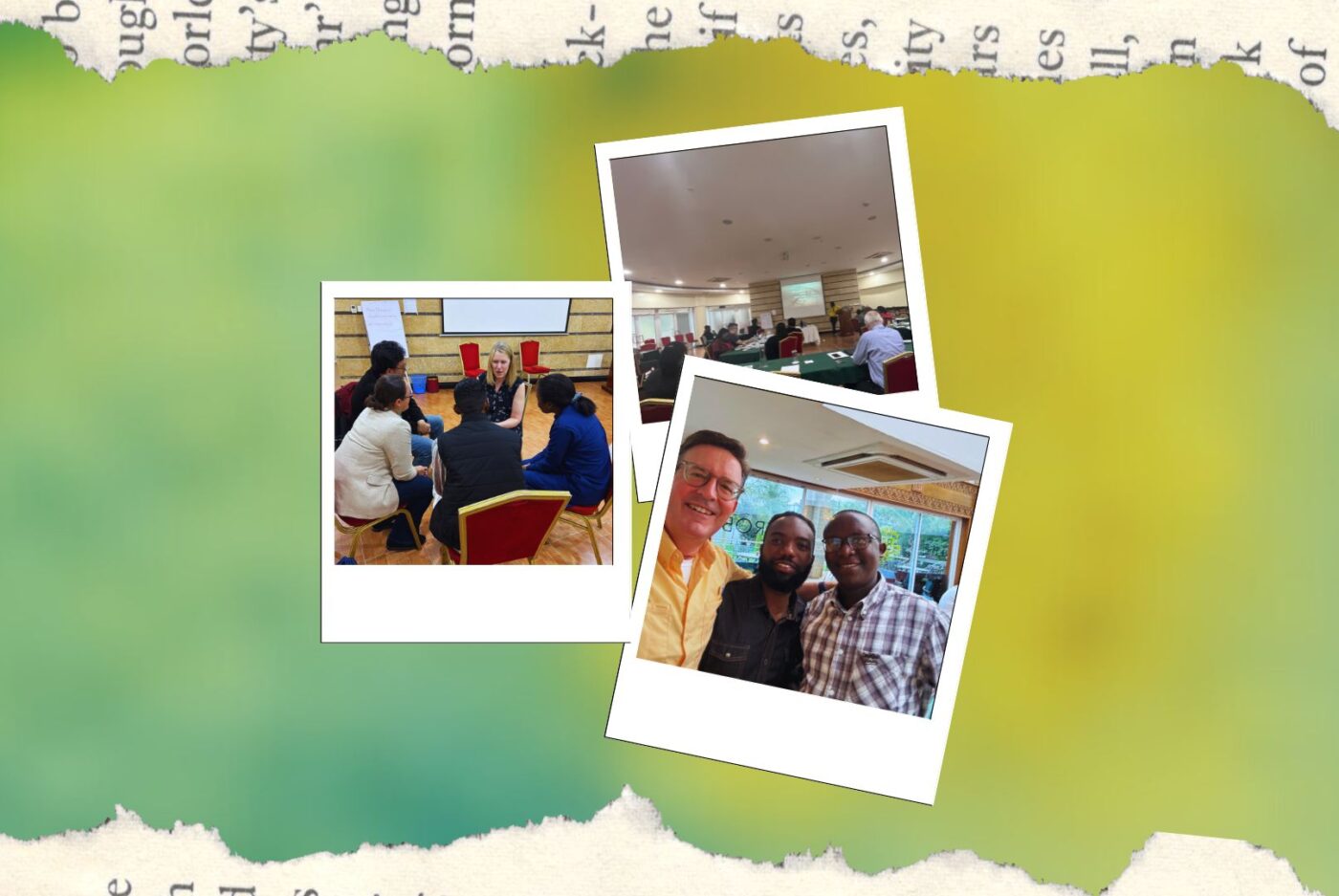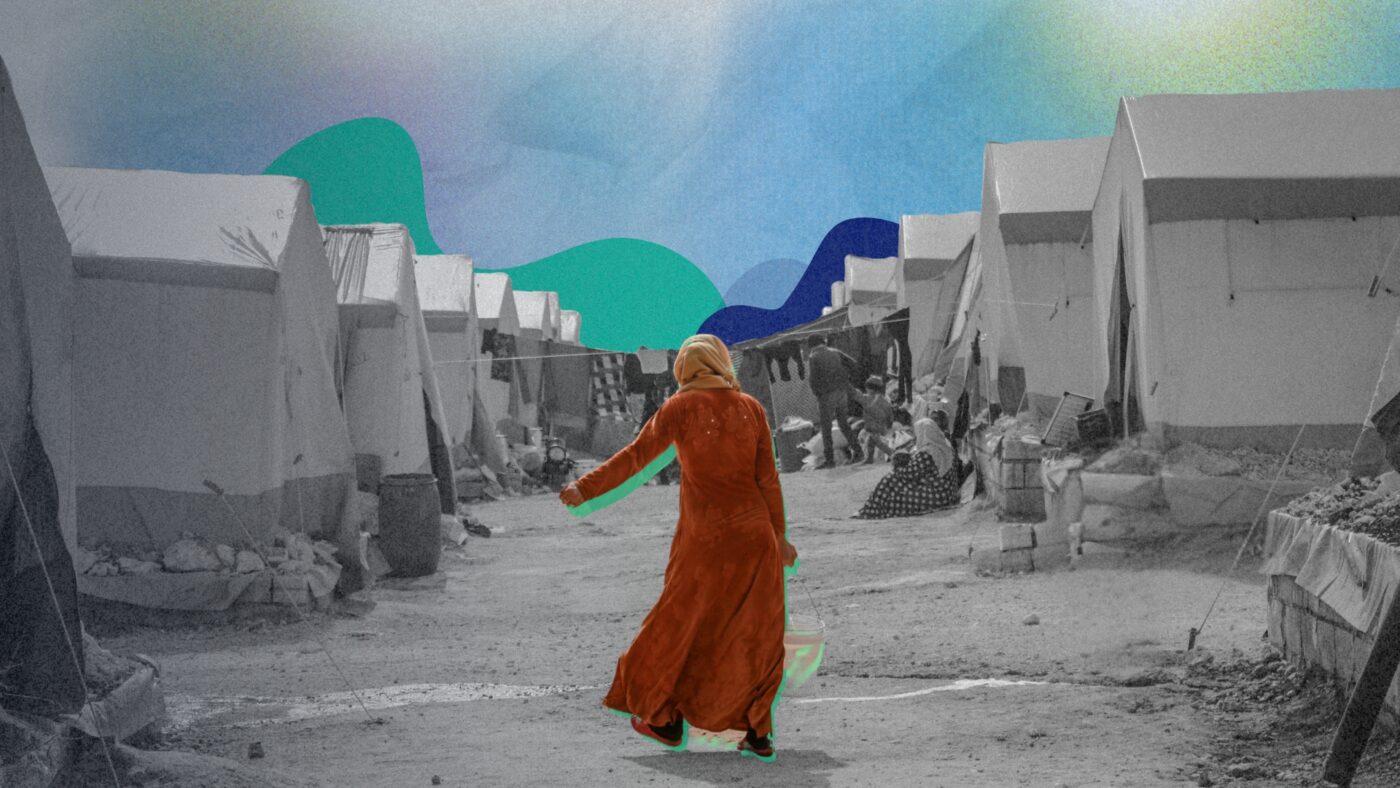Regional Youth Populations
Psalm 78:4–7 give us a compelling purpose to focus our attention on youth in the fulfillment of the Great Commission, emphasizing ‘we will tell the next generation [. . .] so the next generation would know them, even the children yet to be born, and they in turn would tell their children.‘ This need to prioritize focus on the next generation was confirmed by the result of the Lausanne Movement listening conversations that took place in 2020 and 2021. From these listening calls, evangelical leaders from all regions of the world identified reaching, discipling, and listening to youth as one of the two top identified needs for the Great Commission.
According to the United Nations, there are over 1.8 billion young people in the world today, accounting for 16 percent of the global population, 90 percent of whom live in developing countries. The number of adolescents and youth today is at an all-time high, though expected to decline considerably from 17.6 percent in 2010 to 13.5 percent in 2050 if global fertility continues to decline.
As with every cross-cultural missionary, anyone interested in mission to youth must be a student of youth culture and its influences on young people. This is essential to understanding their worldview for the purpose of communicating the gospel to them and adopting them in the family of faith. It is not just a sociological issue; it is about understanding the cultural context with the aim of better reaching them with the gospel.
Thus, this report seeks to reflect on the demographic opportunities and challenges of regional youth populations in the light of the Great Commission in two sections—where youth populations are increasing and where they are declining. We will have a special focus on Africa, which is the key youthful continent.

Who and Where are the Youth?
UNICEF, in providing a framework of protecting the rights and welfare of children, defines children as persons below the age of 18. The operational definition and nuances of the term ‘youth’ vary from country to country, depending on relative sociocultural, institutional, economic, and political factors. The United Nations has adopted the age range of 15 to 24 for describing youth populations. This is the age we will refer to.
Regions with Declining Youth Populations
Latin America and the Caribbean
Latin America and the Caribbean has about 16.3 percent of its population aged between 15 and 24 as of 2021.1 This presents a decline from 18.1 percent in 2011. The Global Youth Culture Latin America Report by One Hope2 surveyed 1,673 young people aged 13-19 across Argentina, Colombia, Mexico, and Spain3 revealing that only 16 percent of teens across the four countries identified as evangelical, 36 percent as Catholic, 42 percent said they have no religion or identified themselves as atheist or agnostic, and only 3 percent of them are said to be Committed Christians.
Brazil
In Brazil the same trend was observed with the young people’s population declining from 17.5 percent in 2011 to 15.5 percent in 2021.4 The Global Youth Culture Brazil5 Report6 by One Hope surveyed 420 young people, revealing that 31 percent identified as evangelicals, 35 percent as Catholics, 6 percent as other religions, and 28 percent had no religion or identified themselves as atheist or agnostic, with only 9 percent of the youth identifying as Committed Christians.
North America
In North America the population of young people declined from 14 percent in 2011 to 12.9 percent of the population in 2021.7 The Global Youth Culture United States Report8 shows that, while almost 51 percent of teens identified themselves as Christian, only 8 percent of the youth identified as Committed Christians. In 2022, the Barna Group released its research findings in a report entitled, ‘The Open Generation’. In this global survey that included over 24,000 teenagers from 26 different countries, the teenagers were asked about how they view Jesus, the Bible and justice. 56 percent of the 2000 plus North American respondents identified themselves as Christians. However, only 30 percent expressed that they have made a personal commitment to follow Jesus.9
Europe
One in six Europeans is between the ages of 15 to 29. A study released in 2018 entitled ‘Europe’s Young Adults and Religion’ demonstrates that in the Czech Republic, 91 percent of young adults categorized themselves as religiously unaffiliated, while in the UK, France, Belgium, Spain, and the Netherlands, between 56 percent and 60 percent said they never attend religious services and between 63 percent and 66 percent said they never pray. According to Bullivant, the researcher, many young Europeans ‘will have been baptized and then never darken the door of a church again. Cultural religious identities just aren’t being passed on from parents to children. It just washes straight off them.’

Increasing Populations
Asia
Asia is a geographically, culturally, and socio-economically diverse region. A huge part of the 10/40 window is covered by the Asia-Pacific region, as well as most of the world’s religiously oppressive governments. There are more than 1.1 billion young people living in Asia and the Pacific. Asia’s youth comprise more than 25 percent of the population. One of the biggest issues that youth believers and seekers face in the region is religious persecution. Thus, for many decades creative evangelism in limited access countries and relational evangelism that meets both the physical and spiritual needs of people, particularly for the youth, have been effective approaches to sharing the gospel in the region. The Global Youth Report by One Hope revealed that only 11 percent of teens were Christian, 50 percent identified with other religions, while 39 percent claimed to be agnostic.
Africa
Africa is the youngest continent in the world as of 2022, with 60 percent of its population aged 25 years and younger, compared to a global average of 25 percent with a median age of 19.7. Additionally, Africa is projected to have the highest youth growth spurt with 42 percent of her youth aged 15-24 years by 2030 and doubling current numbers by 2080.
Africa is not only the youngest continent in the world, but also projected to be the home of most young people by 2067, with 67 percent of the world’s children living in Africa. This youthful character of the African population perhaps embodies her most strategic potential for the world Christian movement.
One Hope’s ‘Global Youth Culture’ report showed that Africa has the highest number of Committed Christian teens at 28 percent compared to all other continents combined at 17 percent.10 This means that every person thinking about missions must not only consider how Africa participates, but Africans themselves must be ready to be on the frontlines of the mission force ready to offer the largest mission force to the world.
The Global View
Globally, there are very few Committed Christian teens. Although 43 percent claimed Christianity as their religion, only 7 percent display the beliefs and behaviors that indicate they are committed to their Christian walks.11

Discipling Youth
The Family as the Primary Learning Center
In Moses’s farewell speech in Deuteronomy 6, he charges the children of Israel not to forget God and his law, and that the things they have heard are first to be upon their hearts and then passed on to their children. God seems to say that the home is the primary learning center and the parents the primary teachers. There is need for church leaders to consider how to strengthen the family and equip parents to do the work of discipleship.
The New Testament introduces the analogy of the family of God to help give us a biblical view of youth in the church. In Matthew 12:46–50, when told by his disciples that his mother, brothers and sisters were outside looking for him, Jesus responded by defining his true family, saying, ‘My father and mother are the ones who do the will of my Father.’ This is both good and scary at the same time. It is good in that we have a wider family, but scary in that unless our young people come to the Lord, they are not truly family. Christians are born again spiritually by the grace and love of God through Jesus. They become brothers and sisters as they are adopted into the family of God. The church has a call to live as a family of siblings with one Father. Four times in his letters Paul says that believers are justified by God and then are adopted into the family of God. Justification is to be declared righteous before God and adoption concerns our relationship to God.
How can we maximize this blessing for missions? The first step in this process is to break the barriers of distrust, indifference, and the emotional gap that has been created by adults in our churches. We must go into the young people’s world to establish trust, care, and relationships. Young people are not ultimately interested in programs, but rather need meaningful relationships with caring adults.
The Incarnational Model
Twenty-first century youth face significantly different challenges that may require further reflection on how to reach them. We propose a return to the incarnational model,12 the model of discipleship shown by Jesus, Paul, and the early church. God sent his Son, Jesus Christ, to live among people, as John 1:1 and 1:14 particularly show. The Son of God came to live among people, in their culture when they were still sinners. This is the incarnational ministry of Jesus according to the purposes of a missionary God.
This incarnational model is referred to as relational youth ministry by Andrew Root.13 Root proposes the need to see ‘beyond relationships as tools of influence but seeing also the beautiful inner reality as the invitation to share each other’s place, to be with each other in both joy and suffering and so doing to witness to Christ among us.’ It is in these relationships that adults who embody God’s word will be able to help the young people see what it means to live life from a biblical worldview.
This removes the pressure of relational youth ministry that demands an end that the relationship should bring. Relationship becomes the end. It is the place where Christ is the end, the place where both the adult and the young person encounter Christ. What matters is not the young person’s ability to become something, like more spiritual or even convert to Christianity, but to be human alongside the adult, which is only possible through Jesus Christ who died and rose again as our human brother. Root says, ‘place sharing takes shape when we place ourselves fully in the reality of the other, refusing to turn away even from its darkest horror.’14 Just as Jesus Christ in his death and resurrection was fully our space-sharer, we too must imitate him by being the same to the young people.
When our young people hear the gospel preached, it is not enough if they do not see us living in light of it. Thinking of future world evangelization, our preaching must be accompanied by our living, and this is only possible in authentic meaningful relationships. A young person looking for a safe space should find it in these relationships where the gospel is lived, where sin is known and forgiven, where growth is encouraged, and where correction is received with enthusiasm for further spiritual growth. Life and theology cannot be separated; theology is constructed from within real life and existence informed by the Scriptures.
Scripture Engagement
Recent research on global youth with a sample size of 25,000 youth aged 13-17 from 26 countries by Barna Group, dubbed the ‘Open Generation’, sought to find out how they relate with Jesus, the Bible, and social justice. The research found out that even though 50 percent of young people have a high view of the Bible as the inspired, inerrant word of God, only about 36 percent of them had been taught the Scriptures by an adult and about 42 percent of them receive wisdom on how the Bible applies to daily life. Again, in the report by One Hope, over half of teens globally say they never read religious scripture on their own. How do we help young people connect with God’s word? How do they see that God’s word is relevant in their situations?
In 2019, Lifeway Research surveyed 2,000 parents whose children are now young adults to find the spiritual health indicators that seemed to matter most. The study discovered that the most likely predictor of spiritual health was that the child regularly read the Bible growing up. 88 percent of engaged Christian parents with children aged 6-9 report their child studied the Bible at least weekly. However, as children grow older to youth age, parents tend to let them manage Bible reading on their own, which leads to a dip in Scripture engagement. How can we change this narrative? As parents and older adults, we must live by example in how we interact with God’s word, as well as come alongside our young people in their reading, meditation, and applying of these life words. Again, relationships in the family and the church are inevitable.

Challenges in Youth Cultures
Youth culture today has been influenced by philosophical movements and shaped by our digital age, resulting in heavy mental burdens and changing global concerns.
A Post-Truth Era
This present culture can be described as a post-truth culture. The debate on whether truth is absolute or relative continues to occupy school halls, homes, university lecture halls, and workplaces. Phrases like, ‘I am living my truths’ are now more common than ever. The fact/value split where values are considered personal rather than public is significantly growing. The loss of Truth has severe real-life consequences. Seventy-five percent of young adults say that they are unsure of their purpose in life. Fully half of young adults say that there is ‘no absolute value associated with human life’.15
How do we raise a generation of young people that base every aspect of life on Truth? If over half of teens believe all religions teach equally valid truths, and 40 percent of self-identified Christian teens say they never read the Bible, how do we help our young people to see that Christianity is ‘total Truth’?16
The answer is going back to the Scriptures, reading them, preaching them, and living them out. It is by training our young people in apologetics and equipping them with skills to engage in public spaces in order to show that Christianity is the only faith that offers a comprehensive view of life. It is by showing that Christianity is not merely a list of propositional truths, but Truth is a person, Jesus Christ.
Social Media
We live in a digital era and more of it is coming. The internet has literally changed culture with a greater impact on generations that never knew a world without it. Craig Van Gelder claims that the ‘internet represents the dominant cultural metaphor of the twenty-first-century world—decentralized, highly participatory, fluid, self-organizing, geographically dispersed.’17
Along with advances in information technology, our digital era has created not only a cyber culture but also a virtual world that has changed the notions of time and space in social life and relationships.
Mental Health
The conversation cannot be complete without learning from the pandemic. The COVID-19 pandemic brought about alarming situations of mental health and well-being. A 2020 study published in the Journal of Population and Social Studies on the mental health effects of COVID-19 on over 1,000 higher education students in China, Indonesia, Malaysia and Thailand, revealed that 38 percent of students surveyed had experienced ‘mild-to-moderate’ depression and anxiety, while over 20 percent reported regularly experiencing ‘severe anxiety’. Research conducted in Brazil18 and Latin America19 also show that the pandemic had a significant impact on the mental health of adolescents and young people. Isolation and lack of human contact only prove that community is key to the flourishing of human beings. It is therefore true that pursuing relationships will kill several birds with one stone.
Global Concerns
Barna asked teens which global problems are of greatest concern to them. In order of greatest significance they are: extreme poverty, global climate change, sexual abuse, unemployment, and political corruption.
Does the church offer answers to these concerns? As they wonder how their lives make an impact in the world, will we be able to lead them to the right places, methods, and solutions? Young people complain that Christian leaders are not active outside the walls of the church and only see church as a place of worship. The church needs to extend its understanding of redemption beyond that we are saved from something but also saved to something and to resume the task for which we were originally created.
Conclusion
What is the significance of these statistics and reflections in the light of missions and world evangelization? If Africa is the most Christian continent now, it follows that the face of Christianity in 2050 will probably be a young African woman. What will they see? What sort of Christianity will they embody? It is the mission scholar, Andrew Walls, that rightly said, ‘what happens within the African Churches in the next generation will determine the whole shape of church history for centuries to come; what sort of theology is most characteristic of the Christianity of the twenty-first century may well depend on what has happened in the minds of African Christians in the interim.’20 What should leaders in Africa do? How are they preparing the young people for evangelization? If Latin America, Asia and North America all have declining populations of young people, what does that mean for world evangelization in terms of the mission force?
Our submission is that we must rethink our models of discipleship and embrace the incarnational model that invites deep authentic relationships that allow the young people to flourish as humans as we encounter Jesus together. Families must be equipped to do the work of discipleship for their children and those whom the Lord will bring their way, expanding the Christian family to seekers. We need to think about how to help young people live integral lives, as opposed to the modern dualistic approach to life where truth is lived out separately in private and in the public. Lastly, we must imagine creative ways of entering the digital world to reach them and, of course, engage in prayer, cognizant of the mission field before us.
Endnotes
- United Nations, Department of Economic and Social Affairs, Population Division (2022). World Population Prospects 2022, Online Edition. Accessed August 24, 2023. https://population.un.org/wpp/Download/Standard/Population/.
- Global Youth Culture: Latin America Report” One Hope. Accessed August 23, 2023.https://globalyouthculture.oriocdn.com/wp-content/uploads/2021/07/LA-GYC-Report_N.pdf.
- Apparently, Spain was included in the Latin America report because it is united to those countries by language.
- United Nations, Department of Economic and Social Affairs, Population Division (2022). World Population Prospects 2022, Online Edition. Accessed August 24, 2023. https://population.un.org/wpp/Download/Standard/Population/.
- Brazil was not included in Global Youth Culture Latin America Report probably because it was colonized by Portugal, while all the other countries were colonized by Spain. Therefore, language, customs and traditions are very different.
- “Global Youth Culture: Brazil Report” Accessed August 23, 2023.
- United Nations, Department of Economic and Social Affairs, Population Division (2022). World Population Prospects 2022, Online Edition. Accessed August 23, 2023. https://population.un.org/wpp/Download/Standard/Population/.
- “Global Youth Culture: United States Report” Accessed August 25, 2023.
- Hartman, Nick. “A Reflections on Barna’s Open Generation Report“,Youth Pastor Theologian, October 26, 2022
- “Global Youth Culture: Insights From a Digital Generation.” One Hope. Accessed July 25, 2023. https://globalyouthculture.oriocdn.com/wp-content/uploads/2021/07/GYC-Global-Report-English-1.pdf.
- Ibid
- Different models and ministry approaches have been used in the past by different people. There is the inclusive congregational approach, which seeks to integrate youth into congregational life. Then there is the preparatory approach, which prepares young people to participate in the life of existing churches as leaders, disciples, and evangelists. There is also the missional approach, which views youth as a mission itself. Finally, there is the strategic approach that prepares youths to become a new church plant. Others have popularized the evangelistic-attractional mode, which involves attracting adolescents to the church by introducing some elements of the culture in the youth ministry program. All these approaches are wonderful with different rates of success and failures.
- Root, Andrew. Revisiting relational youth ministry: From a strategy of influence to a theology of incarnation. IVP Books, 2007.
- Ibid, 83.
- George Barna. “Millennials in America: New Insights into the Generation of Growing Influence.” Cultural Research Center. October 2021. https://www.arizonachristian.edu/wp-content/uploads/2021/10/George-Barna-Millennial-Report-2021-FINAL-Web.pdf.
- Nancy Pearcey. Total Truth: Liberating Christianity From Its Cultural Captivity. Wheaton: Crossway, 2008.
- Van Gelder and Zscheile, The Missional Church in Perspective, Mapping Trends and Shaping the Conversation. Grand Rapids, MI: Baker Academic, 2011, 128.
- Mental Health Of Brazilian Adolescents During The Covid-19 Pandemic. Accessed August 23, 2023, https://www.arca.fiocruz.br/handle/icict/58534.
- The impact of COVID-19 on the mental health of adolescents and youth Accessed August 23, 2023, https://www.unicef.org/lac/en/impact-covid-19-mental-health-adolescents-and-youth.20. Walls, Andrew F.Essay. In Religion in a Pluralistic Society. 180–90. Leiden:Brill, 1976.









